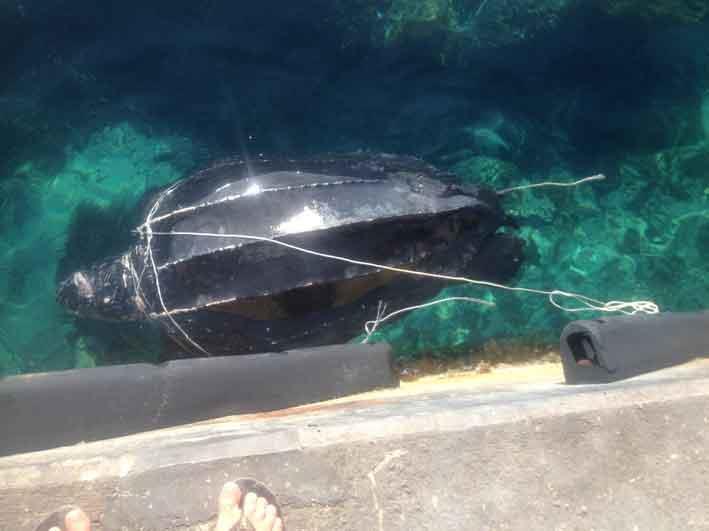The turtle that washed up dead at Cirkewwa on Thuesday died because of a massive infection in the intestines caused by ingestion of plastic, Mepa said today.
Confirming reports that yesterday, the Armed Forces of Malta had towed in a leatherback turtle at the Ċirkewwa quay, Mepa said the dead turtle had probably first been noticed out at sea in the Comino Channel the previous evening.
This species, Dermochelys coriacæ, is not commonly seen in the Mediterranean and in Maltese waters. The last confirmed sighting probably dates back some decades ago. The leatherbacks that come in the Mediterranean are from an Atlantic Ocean sub-population. Leatherback turtles are highly migratory, crossing the Atlantic Ocean and occasionally entering the Mediterranean Sea. They feed exclusively on jellyfish and jelly like creatures.
The leatherback turtles, along with all the marine turtles, were protected in Malta since 1992 through legislation which at that time was reflecting the obligations of the Barcelona Convention. This turtle is also protected under CITES, the Bern & Bonn Conventions and under the Habitats Directive, and are classified as “Animals of Community Interest in need of Strict Protection”.

Although their distribution is wide, numbers globally have seriously declined. The North-west Atlantic populations are the ones that generally swim into the Mediterranean, and their normal nesting areas are actually in the southeastern USA and the Caribbean Sea. They are the largest sea turtle species, and amongst the heaviest modern reptiles globally. They can grow up to a weight of 800 kgs. They are massive creatures with colours ranging from black to very dark brown with lighter splotches. They are distinguished from other turtles not just by their size, but also because they do not have a hard ‘outer’ shell, but a carapace that is elongated and covered by skin (hence the name) and oily flesh.
All the marine turtles are in one family, but the leatherbacks are a family on their own. They also have no claws on the flippers which are more elongated and paddle like than in other sea turtles. The leatherback turtle is also quite special as it has the widest range of any of the sea turtles and tolerates very cold waters unlike other reptiles, due to adaptations in the circulatory apparatus of their limbs, high oil content and enormous body size. The dead specimen at Ċirkewwa had a carapace of about 1.5m by 1.3m, and was nearly 2m long from head to tail.
A full necropsy was carried out by veterinary Dr Anthony Gruppetta to better understand the reason of the death of this sea turtle. The cause of death was probably due to an infection in the intestines which caused liver malfunctions, followed by further secondary infections in the lungs. Plastic was found in the intestines and this probably triggered the massive infection in the intestines. The turtle had been dead between 1 to 3 weeks.
The Authority would like to thank Nature Trust, the Armed Forces of Malta, the Civil Protection Department, the Police Force, the Gozo Channel staff and the Veterinary Division.